If you are anything like me, you have a lot of fingering weight or sock yarn. And mostly single skeins of a colorway. I love hand-dyed yarn, whether it’s solid, semi-solid, variegated or striped. But if I only ever knit socks it can get quite boring and Second Sock Syndrome might just raise its head. Besides how many pairs of socks can one person need? And I don’t know a lot of people who’d be happy to receive hand knit socks. So what to do with all that sock yarn?
There are plenty of other projects you can knit with a single skein of fingering weight yarn. And on top of that all the patterns I’ve linked below are free, so you don’t even have to spend anything (to make room for more amazing yarn)!
Scarves
There are quite a few scarf patterns that don’t need more than one skein. They may not be that long but look nice under a coat or feature a lace pattern and are a beautiful accessory for warmer days.
- Strangling Vine Lace Scarf by Nicole Hindes
- The Killington Scarf by Jennifer Kelley
- Milky Way Scarf by Lynn Bethke
- Commelina by Kelly Craw
- Favorite Scarf Ever by Lise Bruce
- Noro Bias Lace Scarf by Susan Ashcroft
- A Simple Little Something by Amanda Jarvis
- Kary’s Chevron Scarf by Kary Jarred
Shawls
Shawls can also be knit with only one skein of fingering weight yarn, and there are plenty you can knit with even heavily variegated yarns. Here (and with scarfs as well) you can use some of those luxury yarns with cashmere or silk that you might feel reluctant to choose for heavy-duty items like a pair of socks.
- Reyna by Noora Laivola
- Close to You by Justyna Lorkowska
- Pimpelliese by Christine Ebers
- Glitz at the Ritz by Helen Stewart
- Waves of the Atlantic by Deborah Wilson
- Feather Shawl by Robbie Laughlin
- Dandelion Air by Lizzie Harrison
- Esmeralda Wrap by Samantha Main
Cowls
Close fitting cowls often use much less than one skein. So if you wanted you could make the cowl bigger, make another one or a matching accessory like cuffs or a hat. Again cowls are a great place to use sensitive and luxurious yarns. Even if you wear them a lot, they don’t have to work quite as hard as gloves or socks would have to. They are also a great project to practice new techniques on since they aren’t quite as large. Beaded cowls are quite stunning.
- Abstract Leaves by Deb Mulder
- Copilot by Dominique Trad
- Sockhead Cowl by Kelly McClure
- Irish Mesh Cowl by Jo Strong
- Sallah Cowl by Bristol Ivy
- Nennir by Lucy Hague
- Simple Eyelet Cowl by Gretchen Tracy
- Horseshoe Lace Cowl by Sashka Macievich
Hats
Hats are an excellent project for showing off amazing colorways and often leave enough yarn for a small cowl or a pair of fingerless gloves. The end of winter may be coming in a few short months, but there are quite a few pretty spring hats you could make. They are such wonderfully quick and entertaining knits that you could even knit a couple in a row. And they make great gifts that you can store away for later.
- Barley Light by tincanknits
- Twiggy by YYC Knits
- Gokstad Hat by Julie Knits In Paris
- Izmir Hat by Shana Schasteen
- Sometimes Hat by Vera Sanon
- Reverie by Amy Swenson
- Wasabi Hat by Linda Irving-Bell
- Brilthor by Janina Böttger
Gloves, Mittens, and Cuffs
Simple gloves or fingerless mittens are a great project to use some pretty variegated or ombré yarn. Or make a pair of intricately cabled ones in an eye-catching and bright color to wear on grey winter days. Just make sure you use a yarn that can withstand the use without felting or pilling too quickly or you might not be able to enjoy your new gloves for very long.
- Knotty Gloves by Julia Mueller
- Spatterdash Wristwarmers by Dagmar Mora
- Straightforward Mitts by Mone Dräger
- Pieces of Eight Mitts by Sybil R
- Wannabe Vintage Mitts by Jennifer B.
- Starburst Mitts by Sybil R
- Madrid by Alexandra Brinck
- Entangled Stitches by Julia Mueller
Shrug
Sleeveless shrugs and boleros are usually small enough to need more than one skein of fingering weight yarn. A beautiful lace shrug knit in shimmering silk or a quirky one knit in a heavily variegated yarn. The options are numerous. Should you need a larger size, some of these shrugs may not fit. Not all of these patterns have multiple sizes, and if you make them larger, you may need more than one skein.
- Ann Shrug by Cia Abbott Bullemer
- Diamond Rib Lace Shrug by Sherri Hughes
- Lace Shrug by Andi Satterlund (The largest size needs more yarn, but the others should work)
- Lace Sleeve Shrug by Joan of Dark aka Toni Carr
- One Skein Bolero by Chi-Sze Ooi
Boot Toppers
Similar to socks boot toppers are often more visible but don’t put quite as much strain on the yarn as socks would. Therefore they are fantastic items to show off those special skeins you’ve got tugged away.
- 2-in-1 Boot Cuffs With Buttons And Lace by Mari-Liis Hirv (Originally knit with two colors but these would also look nice when you knit them with only one color.)
- Agnus slip stitch boot toppers by Carol Wells
- ‘Nautical But Nice’ Boot Warmer by Raquel Gaskell
Baby Sweaters, Dresses & Other Baby Clothes
You can also knit sweaters and cardigans with a single skein. For babies. I have knit entire sets of baby clothes (sweater or jacket, hat, and shoes) with a single skein. I would only use superwash or similarly easy to care for yarn for babies. These are heavy duty items that will get washed a lot. But you can go all out with the colors. Babies love bright, saturated colors and strong contrasts (their eyes can see those a lot better). And knitting baby clothes is fun. I’ve knit six of the pattern mentioned below myself.
- Brocade Baby Jumper by Carolyn Hine
- Ida’s Simple Dress by Julia Gabrielsen
- B21-28 Stripy Stripes by DROPS design
- Flax Light by tincanknits (Yes, I keep mentioning this pattern. But it’s a great pattern! And the first two sizes only need a single skein.)
- Swirl Hat by Mandie Harrington
- Sunnyside by Tanis Lavallee
- Braided-Edge Baby Hat by Becky Colvin
- Tilias Kofta by Anne B Hanssen
- Maile Sweater by Nikki Van De Car
- Stay-on baby booties by Knitgirl’s Mother
Miscellaneous
What else can you knit? The possibilities are as limitless as your imagination, really. But some of the more common items are book covers, toys, bags, cup cozies, and bookmarks. Some of these items use a lot less than one skein and can also be knit to use up scraps and mini skeins.
- Celestine Sox by Berroco Design Team
- Sunny Bunny by Sarah Youde
- Bujo Sleeve by My Cup Of Knitting
- One for the Books by Martina Behm
- I’d Love Some Coffee by Thaddeus Nelson
- Braided Mug Cozy by Sarah Alderson
- Bookmark Trio by Megan Goodacre
- Ditty Bags by Maia Discoe
- Exploring Waves by Laurie Lee
Do you have a special skein of fingering weight that you are saving for the right project? What have you knit with sock yarn before? What is the craziest thing you’ve ever knit with sock yarn? Please let me know in the comments below.
Next Friday I want to write about the dreaded gauge swatches. Many of us hate knitting them. They seem to lie to us, and we just want to get to the actual project already! But they can be really useful and are needed. So come back Friday and don’t miss it!
Did you enjoy this post? Then please share it on Pinterest!
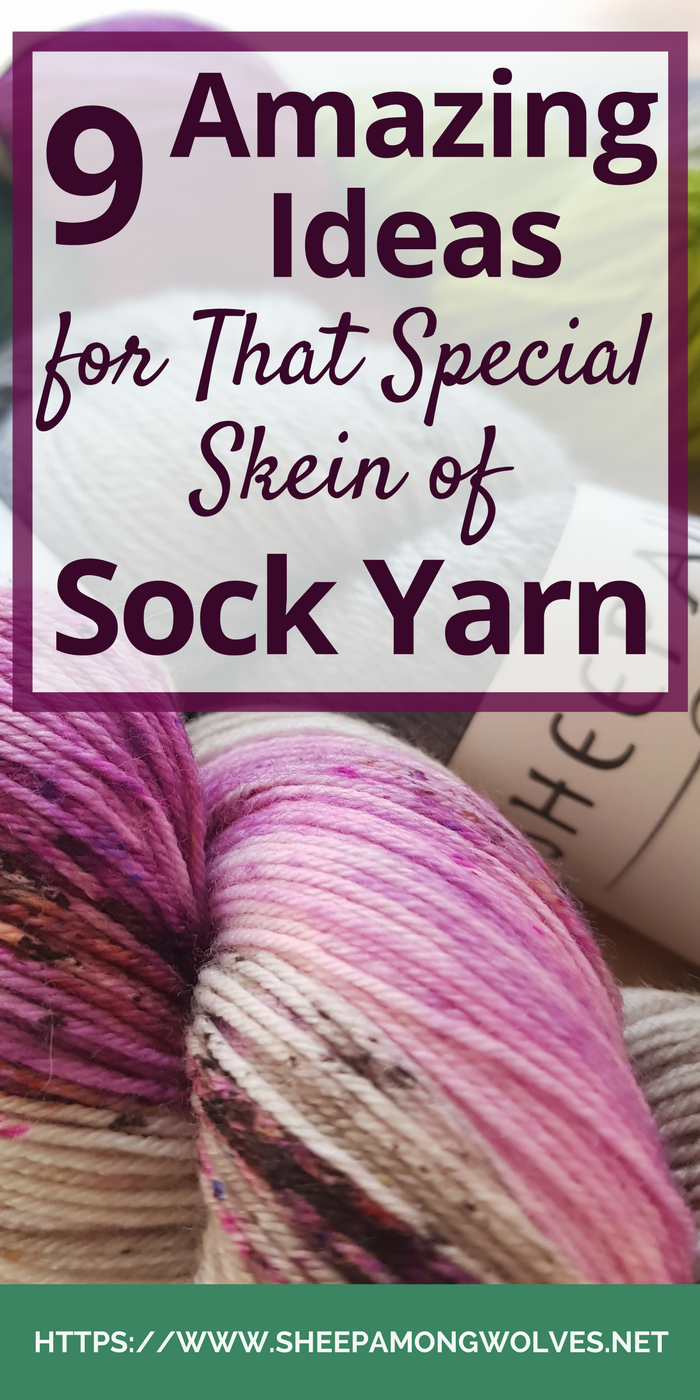

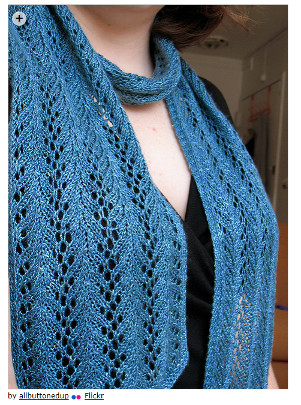
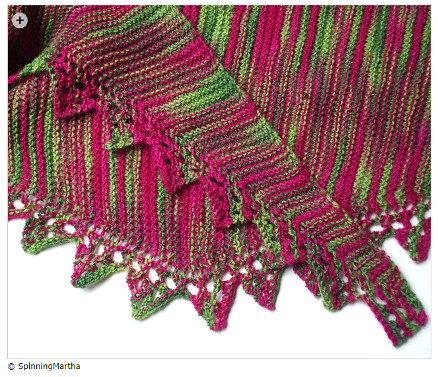
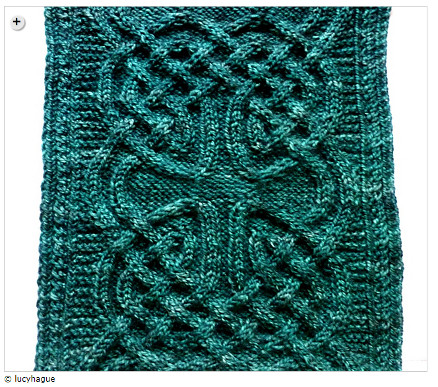
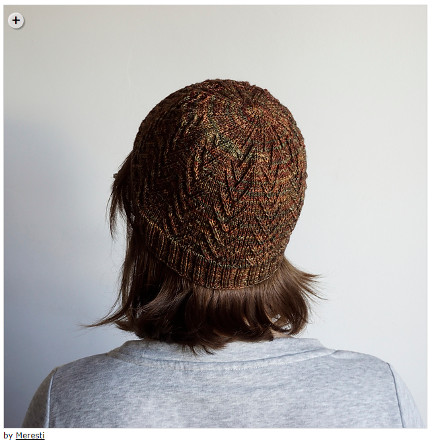
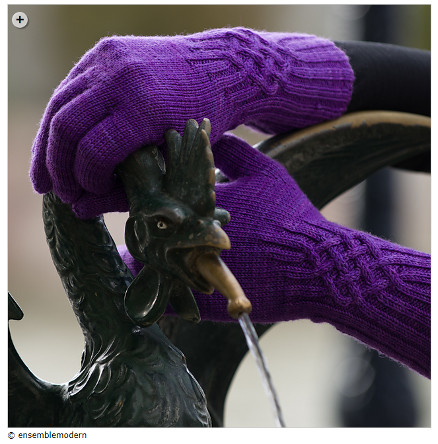
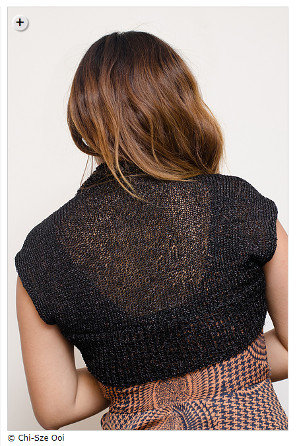
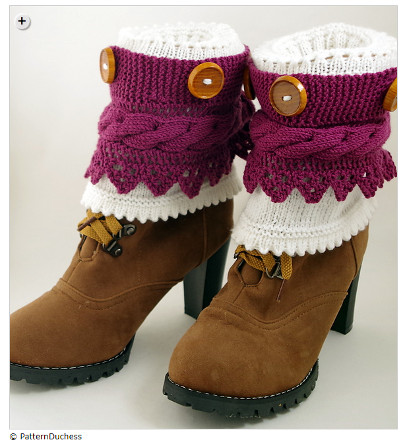
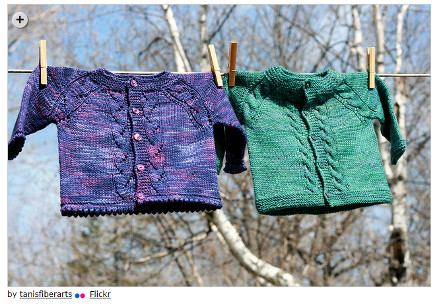
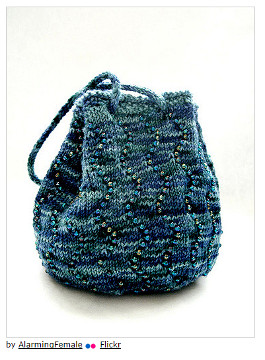
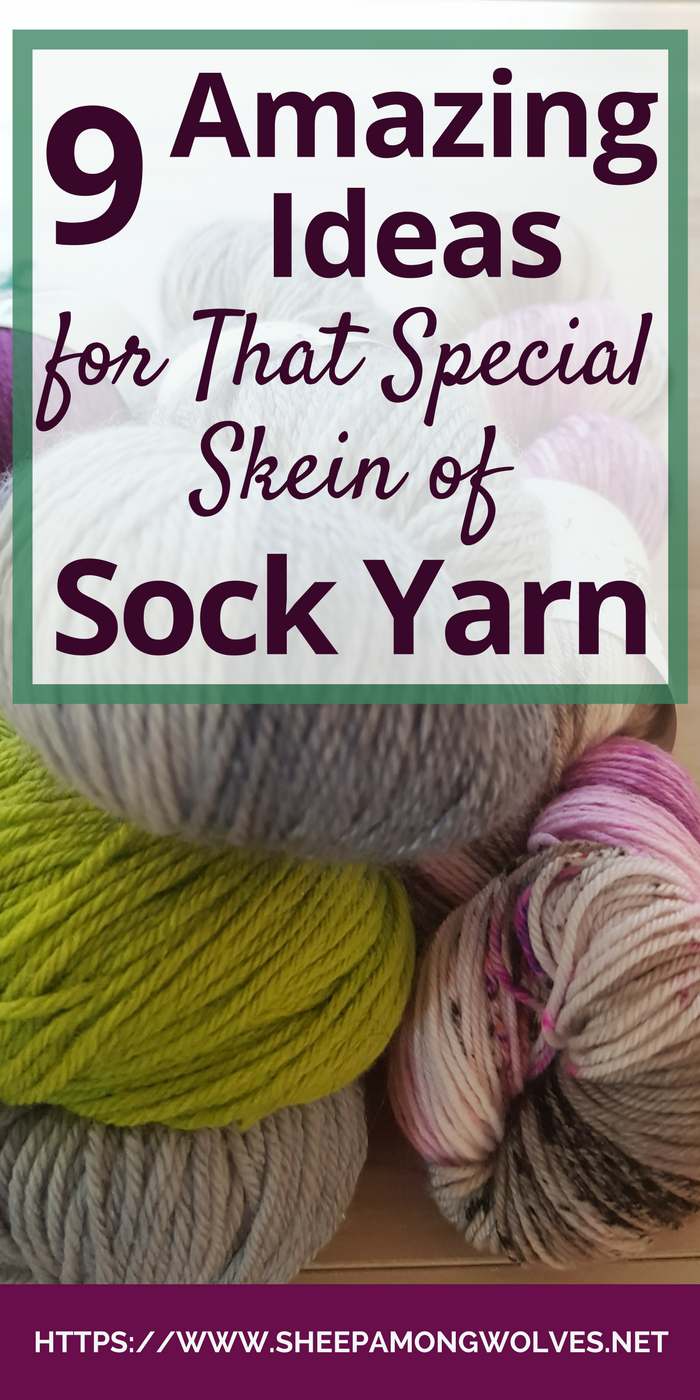
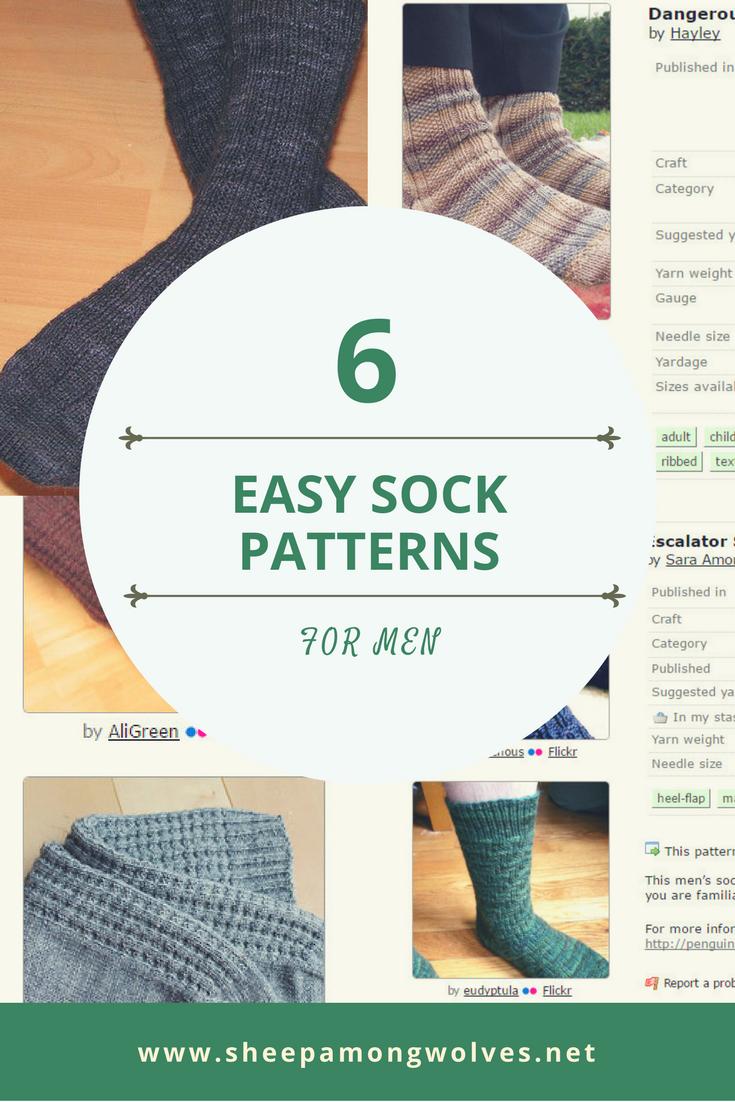

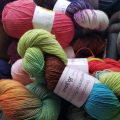
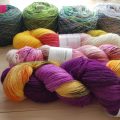
Thank you, Love these ideas!!!
Glad you like them. And thank you very much for leaving a comment. I always love to hear from fellow knitters. 🙂
These are great Nadja. I will be trying some. Thanks
Always happy to help and happy to hear you’ve found something you liked! 🙂
I have made many friendship bracelets, mini prayer mats that fit nice in books, and made a crazy colored pillow for my small dogs. The wool in sock yarn is very warm for them. My favorite is to make doggie socks to fit into the balloon kid of booties for cold weather. Nothing too good for my 2 little bundles of fun.
Those are also great ideas. I’ve never lived with dogs, so I don’t know much about them or what would you could knit for them. I’ve shared my home with cats for the past almost 18 years – and my experience with cats is that they hate everything that is intended for them – including cat beds and toys. 😉
Seriously, who wouldn’t love to receive a pair of handknit socks?? Socks are on my bucket list, but I don’t knit very well and crochet only slightly better. The idea is daunting. I do, however, have some lovely sock yarn!!
Oh, my husband (lovingly called Papa Wolf on this blog) loves handknit socks. And I do. And that’s about all the people I know who enjoy them. And I have knit socks (and other things) for other people before. I don’t have a great many people around me who love gifts of the woolen or handknit persuasion in general, unfortunately.
Socks aren’t that hard to knit, actually. They only seem difficult. Practice turning a heel (choose any method you like, short row heels are quicker, heel flap heels easier and afterthought heels can be a bit tricky to place on the foot but are easy to knit) on a small swatch first and then grafting and the rest is just knitting and purling. I may tackle that subject on the blog in the future, but it’ll take some preparation and time.
Would your Ravelry V-Formation pattern be suitable for a beginner? If not, can you recommend a beginning pattern? In the meantime, I’ll check out heel methods. Thanks!
Hi, Colleen. I’d say you should have knit a sock or two before to knit those or at least have other knitting experience, so you don’t have to focus on too many different new things at once. I will have an easier pattern coming out in a bit, but it still needs to go through test knitting. If you want to join my mailing list so I can update you on this and any further things that I might release.
But check out this post: 6 easy sock patterns for men. All of these should be suitable for a beginner. As long as you stay in a basic k2, p2 pattern or switch to stockinette after the cuff, you should be fine for your first sock. You could also just knit a tiny test sock to practice heels and toes and then go on to a real one. Please, feel free to message me if you need any more advice. I’d be happy to help. 🙂
I used a long I cord made with sock yarn as a necklace
I didn’t even think of jewelry when I wrote that post. 🙂 But it’s a great idea and Laura Nelkin has a lot of beautiful knitted jewelry! Here is a link.
I so enjoyed this post, I feel inspired at age eighty-two-years old. It is so informative. I’m so glad I came across this page, thank you!
Thank you so much! I’m happy to hear you found it interesting.
I, too, really enjoyed all your information. I’ve knit socks for years and have quite a stash of sock yarn, so I was very happy to see all of your suggestions. Thanks a bunch!
Thank you for your lovely comment! I’m happy to hear you enjoyed this post.
Love your ideas and the many free patterns you offer. You are very generous!
Sorry, for the late reply and approval of the comment. I had some trouble with the server and didn’t get notified of any comments to approve.
These aren’t really my patterns 😉 but when I find something I like I want to share it with others who might enjoy it! That’s where you come in. 🙂 I’m glad you liked the post!
What a great post, thank you! I am an avid sock knitter. I have lots of leftover sock yarn, and these patterns are terrific.
As I’ve said previously, sorry for the late response. It’s great when the server has a hiccup, and you don’t notice a thing until about a month later.
I have a ton of leftover sock yarn myself. I use it for little socks for the wolflings and to knit up swatches for posts here or to try out a stitch pattern or technique for myself. And of course my on-going long-term project: the sock yarn blanket. Don’t know if I’ll ever finish this one but it’s fun to knit a bit on it here and there. 😉
Hi Nadja. This is a fabulous knitting resource full of beautiful patterns. Thanks for sharing. Our readers will love it. We’ve included your post in our latest craft inspiration roundup. https://craftylikegranny.com/little-things-that-make-life-big/ Cheers Jodie 🙂
Thank you very much! I’m happy I create something in my little corner of the internet that others enjoy. 🙂
I’m relatively new to knitting, but I do love the colors of “sock yarn”. This post has some very wonderful suggestions with links. Thanks so much! I will be sharing this on my knitting board at Pinterest and my website.
Nowadays there are also lots of beautifully hand-dyed yarns of different weights (they used to be almost impossible to find around these parts 10 years ago ). So we aren’t limited to fingering weight yarn anymore if we want variegated yarns or color gradients from hand dyers. But I find fingering weight or sock yarn to be very versatile and therefore a good foundation for any stash.
Thank you very much for your kind comment and for sharing this post! It makes me happy to create something that you and others can enjoy!
Very nice selection! Thank-you so much for posting these.
I have been considering using my variety of sock yarn “leftovers” to carry as a second yarn, along with a neutral color worsted, to created a unique afghan. I knitted all of our daughter’s socks, and it would be a great trip down memory lane.
That’s a beautiful idea! Send me a picture if you get started, please! (And a link to your blog or Ravelry project page.) I’m thinking of writing about what to do with leftovers in the future, and that afghan would fit wonderfully into that post!
I crochet neckties from sock yarn. It’s a good weight for the wearer. My personal quirk is making ties with pointed ends, classic knitted ties have square ends.
WOW! I was able to save some great patterns from your article, Nadja. Thanks so very much! ~Pam
Thank you, happy to hear you enjoyed it!
I just finished knitting two lapghans for my nephews using any weight of washable wool from Aran down to sock in stripes across. With Aran I used one strand, DK I used one strand plus one strand sock yarn in a complementary or coordinating color, three strands of sock yarn together. First, I chose a main colors theme, and used one at either end of the ‘ghan, then filled the center with varying widths of colors. Most of my sock yarn was variegated, so I chose three to put together that had a basic same color theme. I did the ‘ghan in garter stitch that was warm and cushy, especially where the three strands of sock yarn were knitted. My pattern was K10, P1, and onward, ending with K10 on #8 needles. I realize this uses much more than one skein of sock yarn, but is a good way to use up ‘left-overs’ from sock knitting.
I have a loose plan of doing a post on what to do with left-overs in the future. I will definitely come back to this great idea for it. Thank you for commenting!
Unfortunately they are not all in one place, there are tons of links to all kinds of hats, scarfs, bags, etc. so not really helpful unless you have a bunch of free time.
I thought the plural of scarf was scarves and not scarfs….
So, did I. I looked it up because my spell and grammar checker didn’t point this out to me as an error. It appears both versions are correct, but the pronunciation is slightly different. And I prefer the -ves version of that plural, so I changed it. Thanks for pointing it out to me.
I have a new addiction, making Dorset Buttons, sock yarn is perfect, will then sew on to knitted Twiddlemuffs.
With left over sock yarn I have made little mini bags, they have a narrow neck with hole in the bottom, a draw string top. They hold a role of dog poop bags. When attached to a flexi lead they do not make noise and they are really stylish.
These are some great ideas! So glad I found this information. Looks like some fun knitting projects in my future….I do have some extra sock yarn that never became socks! Thanks!
Thank you for these. However, how big is a skein? I assumed, as all the sock yarn I buy, that’s 50g. The Drops sock yarn (Fabel) is 205m. Some of the baby tops you’ve suggested ask for more than this eg Brocade Baby Jumper says 350m for the smallest size, and the Flax Light asks for 320m. Are your skeins 100g?! Perhaps that could be clarified in your introduction.
Hello Jackie,
most skeins I see in stores or online come in about 100g which usually amounts to about 380-420m per skein. I’ve come across even larger skeins (most notably Wollmeise) of around 150g and mini-skeins at even less (like 5-10g), but 100g is the most common and should be enough for most of these projects. Websites and stores sometimes refer to 50g skeins as half skeins. Since 100g skeins are so abundant and, most people mean 100g skeins when they speak of a skein of sock yarn, I assumed it would be understood. I will make a note to add a clarification in future, however. I see how my assumption can make it confusing for others who haven’t seen that many different brands and dyers yet. Thank you very much for your comment!